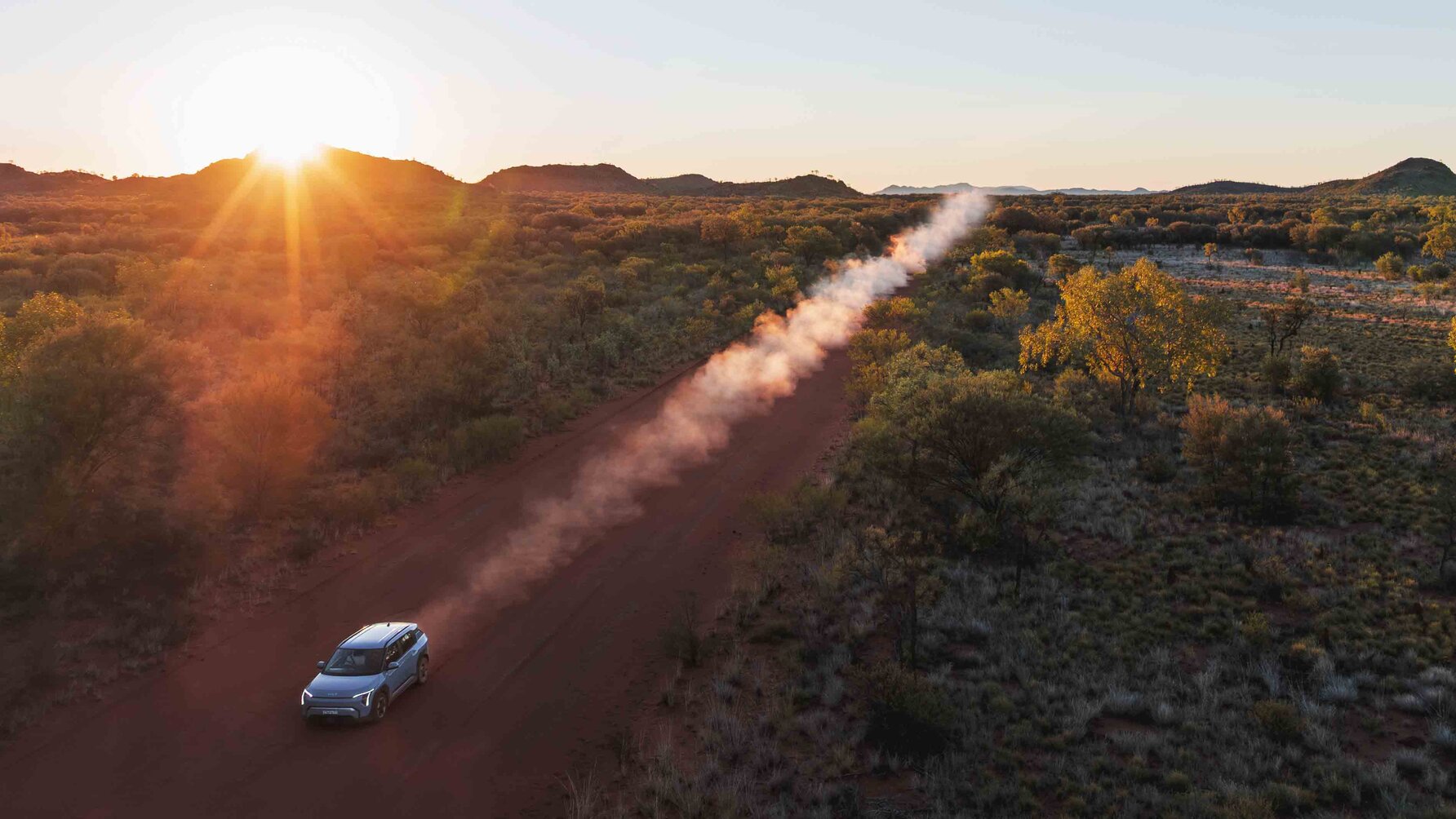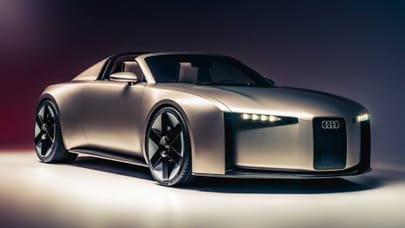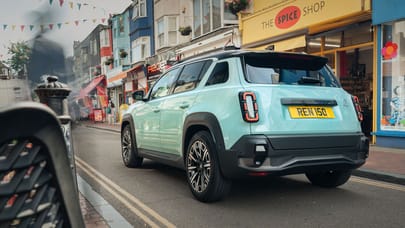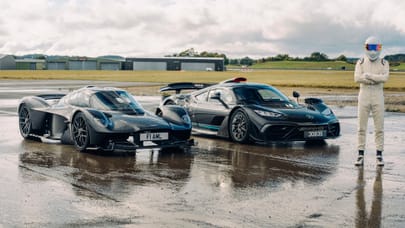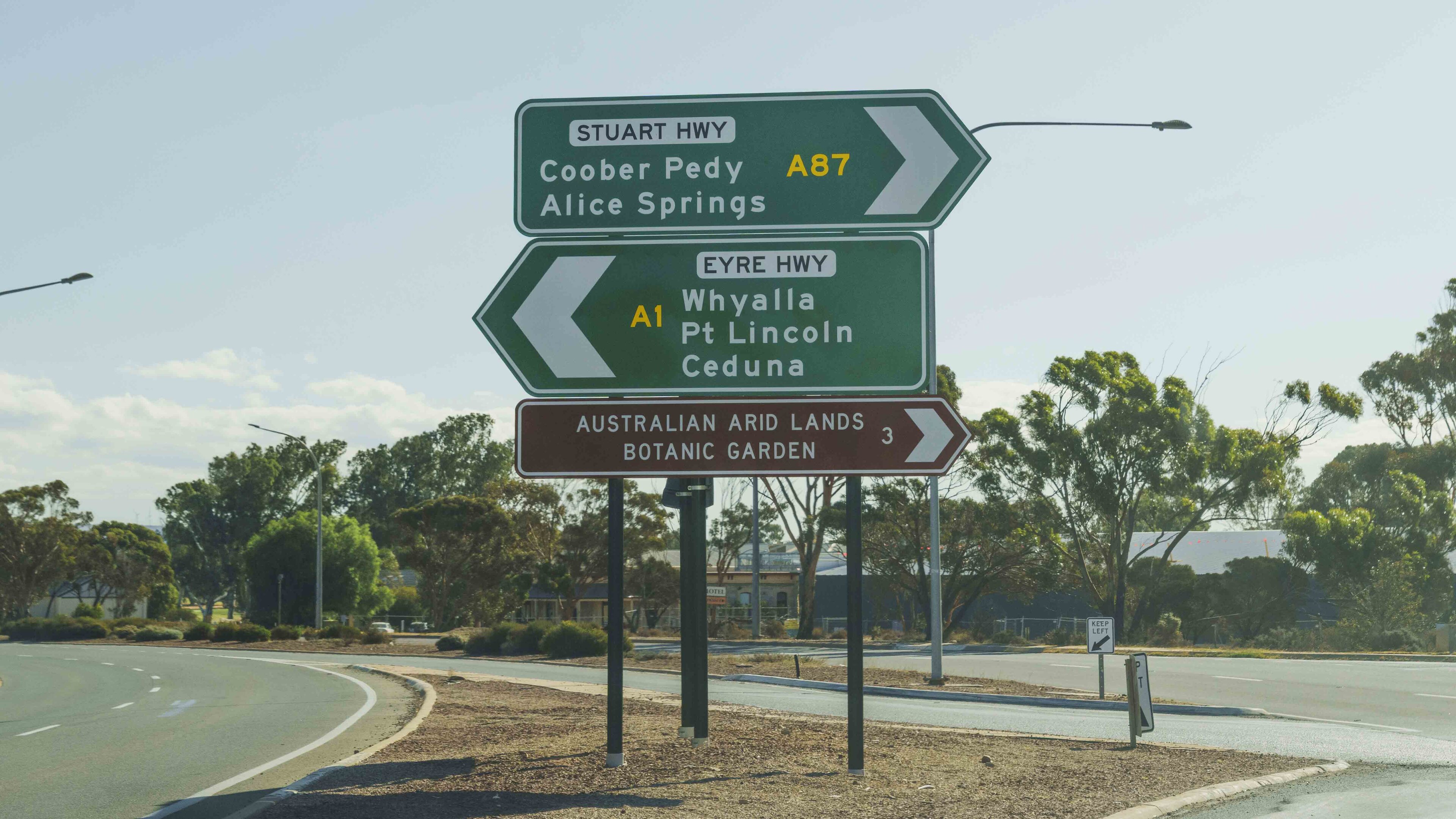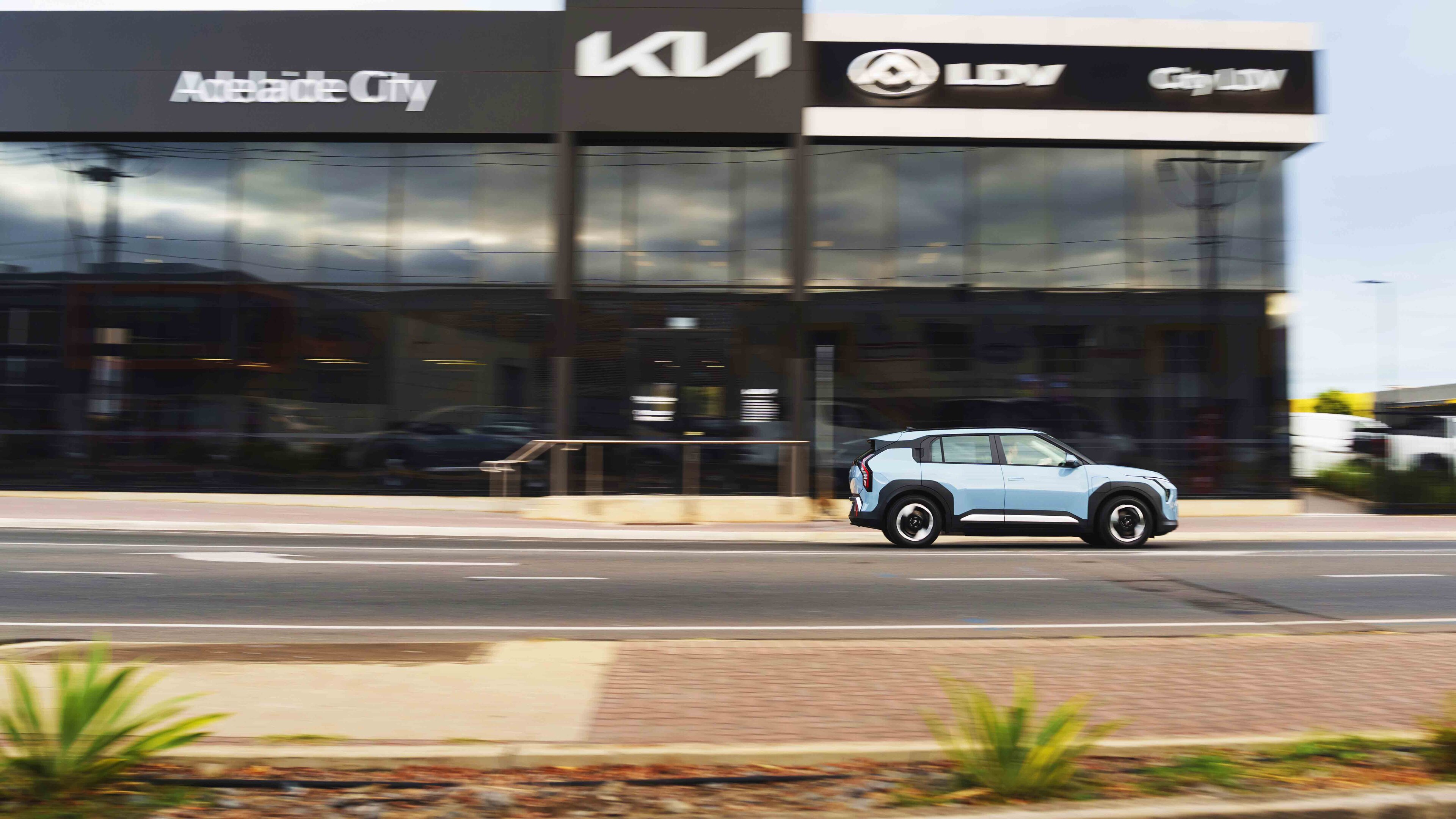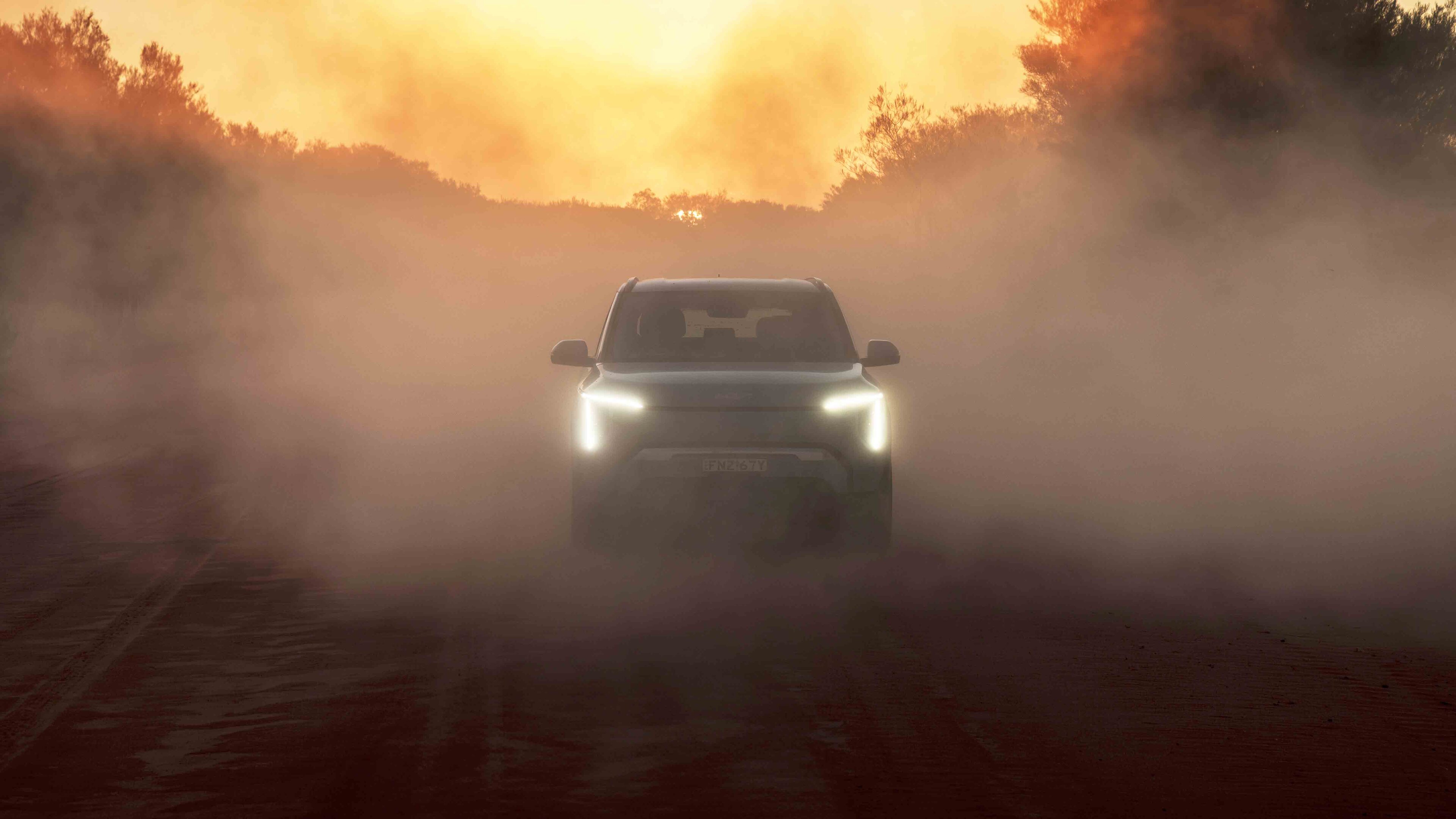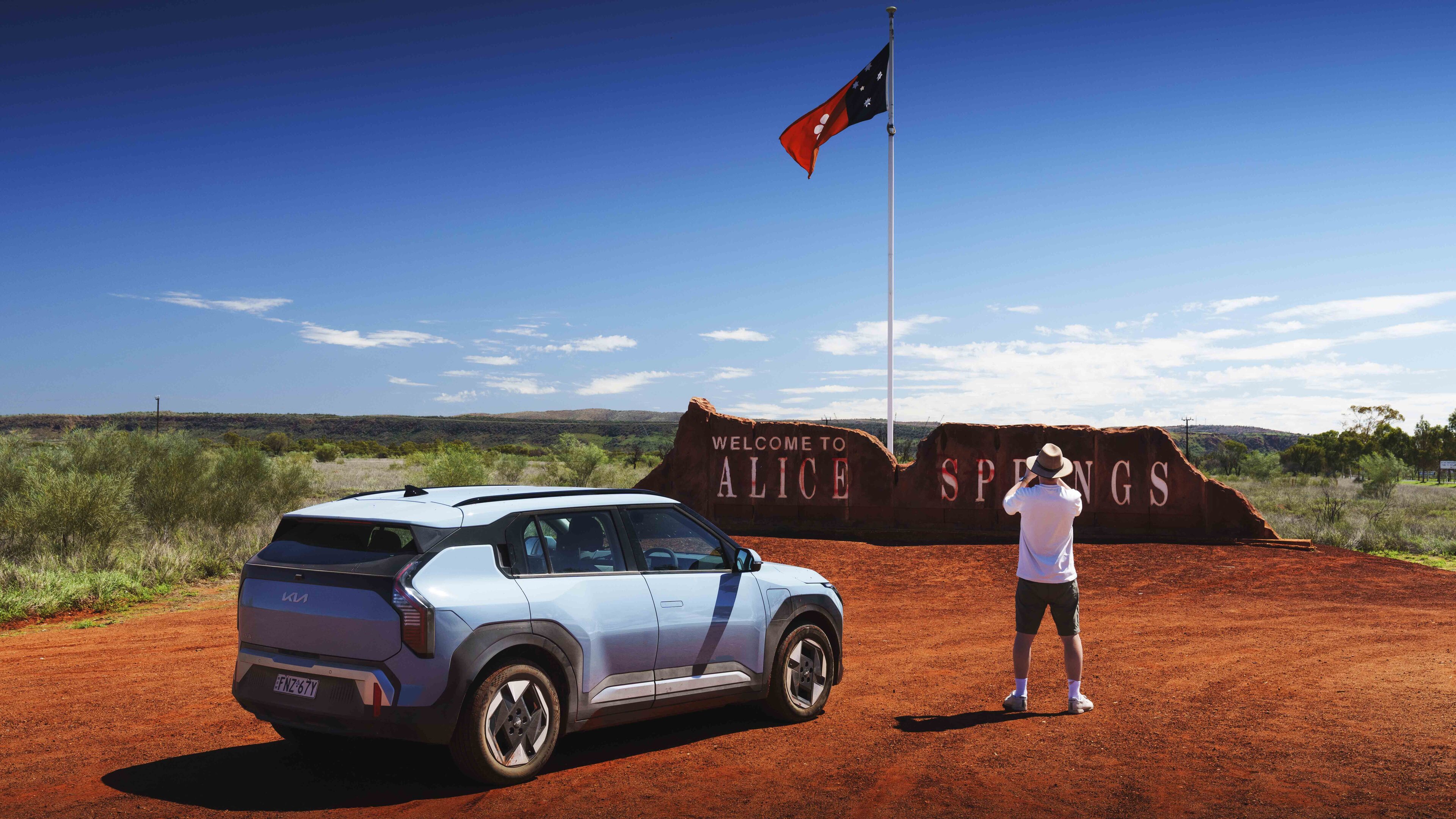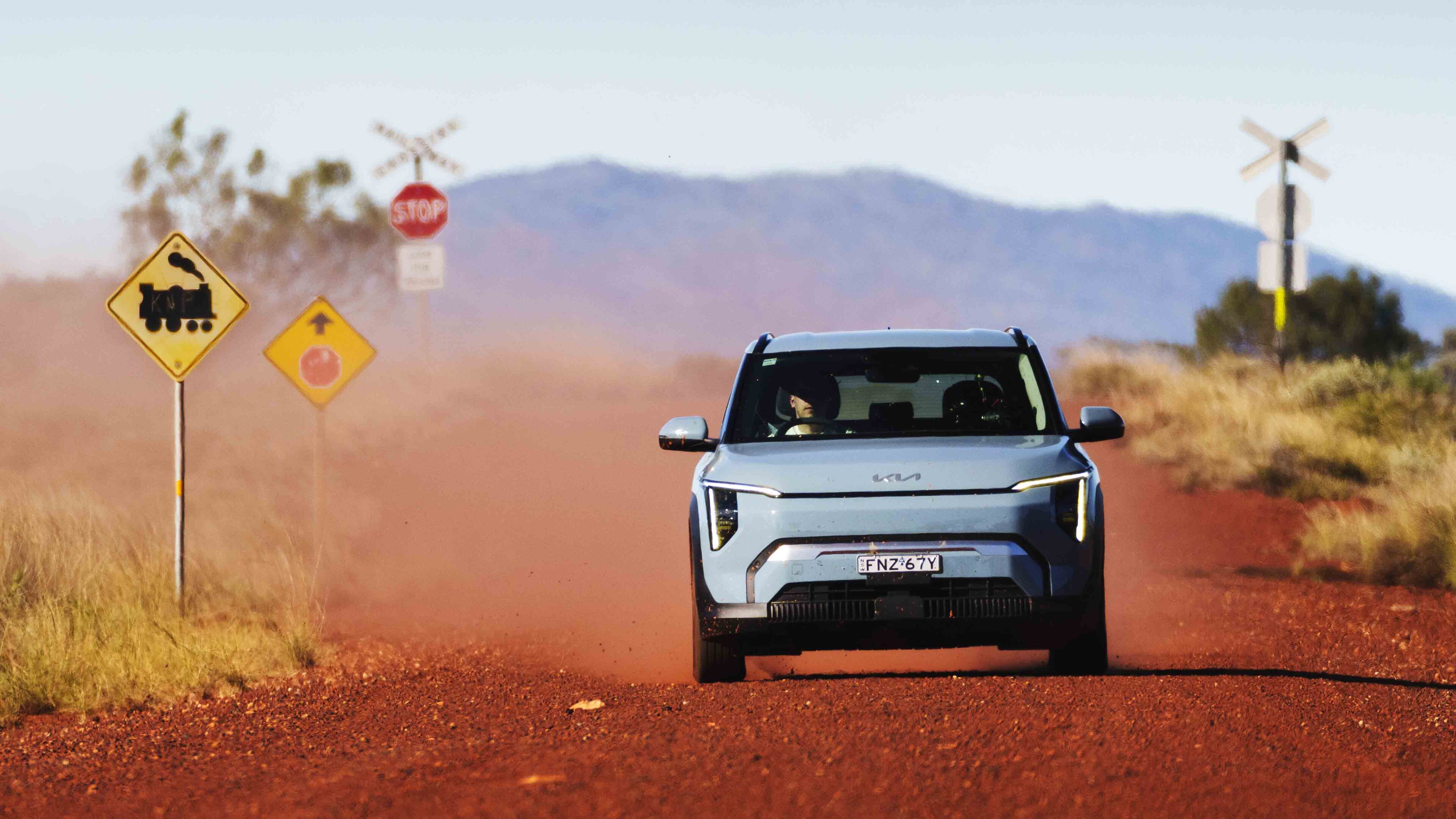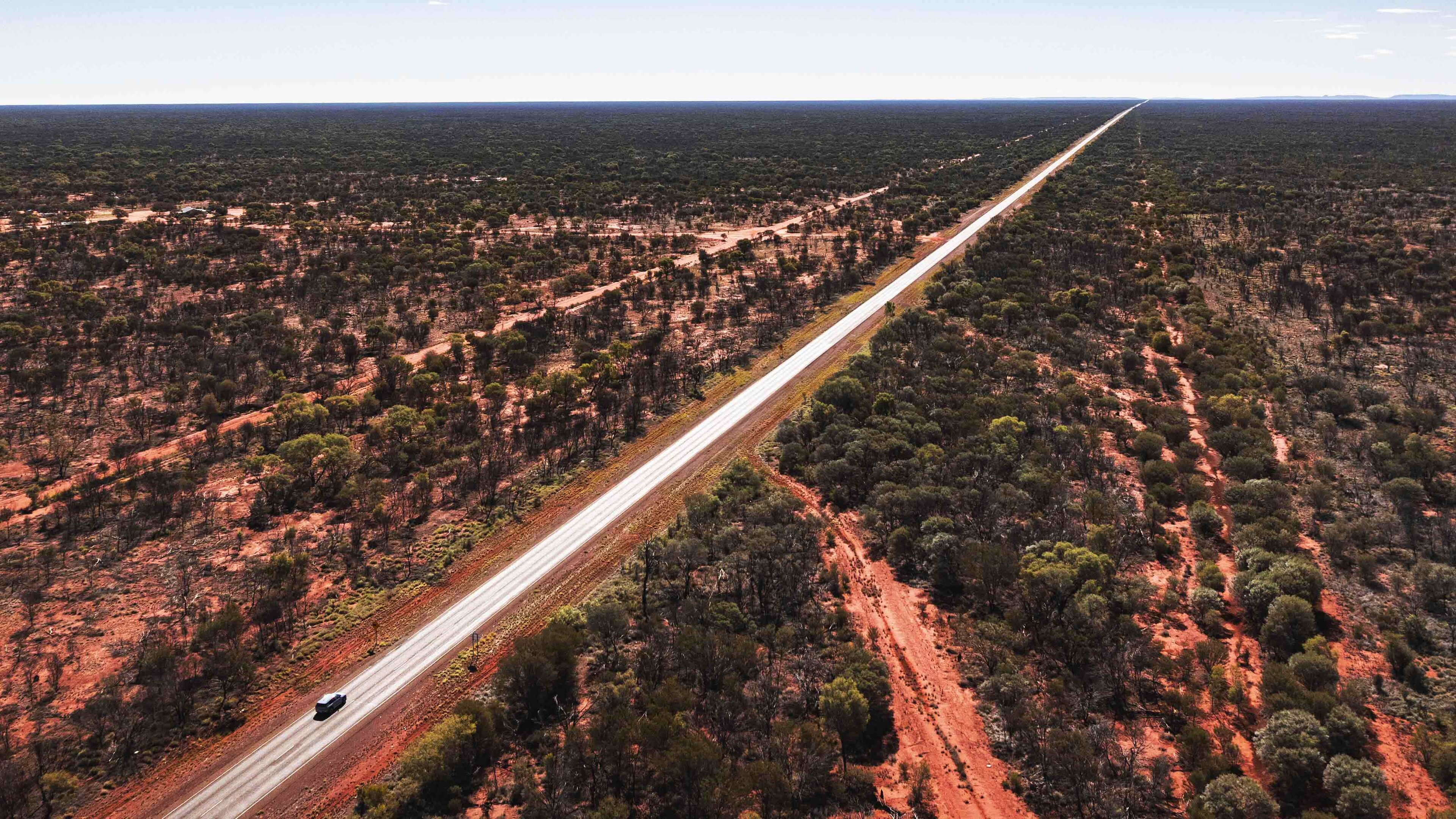
Into the red: 1,920 miles across the Australian Outback in the Kia EV3
Can a normal electric family hatchback drive coast to coast across Australia? Welcome to Top Gear’s most ambitious EV roadtrip yet...
One hundred and sixty years ago the luxuriously bearded explorer John McDouall Stuart needed three attempts to complete the first northerly expedition across Australia. About five minutes into his successful mission, he was kicked in the head and lightly trampled by a startled horse. Being the hardest known form of human – a Victorian Scotsman – Stuart refused to go to hospital and was instead stretchered for almost a third of the 2,000-mile odyssey.
I am not the hardest known form of human. I am a part-avocado, ‘ask YouTube how to erect shelves’ millennial. This attempt to retrace Stuart’s steps in an electric hatchback at the first time of asking is also likely to be a headache.
The road I’ll use is named in McDouall’s honour: the Stuart Highway. It lasted until the late 1980s before it was fully paved. Speed limits weren’t enforced until 2007. Usually raw distance is the enemy of any EV roadtrip, and we’ve got plenty of that – 1,920 miles from Adelaide, capital of South Australia to Darwin, biggest city in the Northern Territory. But for the next four and a half days the environment itself is a challenge for almost any car. We’re spearing straight into the Australian Outback. A respect-demanding wilderness largely untouched by phone signal, teeming with deadly animals, where summer temperatures can soar past 40ºC during the day and drop below freezing after dark.
Photography: Dean Smith
But it’s mild in Adelaide this morning and our base spec Kia EV3 (with £3k Long Range battery upgrade) promises 400 miles on its full charge. The local dealership’s lent us a spare wheel (EV3s are only shipped with the emergency foam) and we’ve bagged an extra cable to hook up to rural three phase power outlets at caravan parks if the charger network is a letdown. All that plus photography and video gear, rations, bottled water and a hefty towrope is bundled into our diesel SUV support car – carefully selected for its 3.5 tonne haulage capacity. You don’t stroll off into the Outback without a contingency plan. And the less weight the Kia has to carry, the better.
Adelaide’s traffic flows smoothly and we’re in Port Augusta by lunchtime, a sleepy nondescript town reluctant to play up to its ‘gateway to the Outback’ status. As there’s a 200kW charger by the river, we replenish. Pitstop strategy isn’t like a combustion car, where you drive until the fuel light blinks then think about finding a filling station. We need to stay topped up, so if a charger lets us down, we’ve got enough juice to make it to the next one. Which is sometimes five hours away.
Putting Port Augusta and civilisation in the rearview mirror, it’s fascinating to watch nature basically give up as we officially enter the Outback. Verges rich in trees and grasses fade to arid scrub with the occasional broccoli headed tuft and grey bleached bark. The temperature’s not risen above the mid 20s, but I’m glad the entry level EV3 Air doesn’t bother with a greenhouse effect sunroof, so I can run the aircon at idle. It’s reporting a healthy 4.3 miles per kWh, meaning a maximum range of around 348 miles. Maybe this’ll be easy? Easier than driving an electric Lotus to the Riviera. I relax and cue up Men at Work from a saved playlist as phone reception dwindles away.
Our overnight stop is Spud’s Roadhouse, 300 miles from our origin point. Could’ve made it in one charge, but why risk it? Spud’s has a rapid charger and the EV3 is fully juiced less than two hours after we arrive to the first of several spectacular Outback sunsets.
Top Gear
Newsletter
Thank you for subscribing to our newsletter. Look out for your regular round-up of news, reviews and offers in your inbox.
Get all the latest news, reviews and exclusives, direct to your inbox.
A roadhouse is a deeply Aussie phenomenon, a sort of service station/motel/truck stop spliced with a pub. We dine on burgers, guffaw at the outstandingly rude gift shop merch and retire to rooms appointed like Soviet prison cells.
We leave at dawn to make use of the coolest time of day. Why not just drive through the night? Because unless you’re a 200-tonne road train sporting bull bars Mad Max would blush at, you stay off the Outback highways after dark to avoid Australia’s deadliest animal. Forget sharks, snakes and scorpions – more Australians are killed every year in traffic accidents involving kangaroos than encounters with any other creature. It has a palpable effect on Aussie insurance premiums and as we set a course northward, the fresh death toll scattered across the road is appalling. Every hundred yards there’s a burst kangaroo, innards readily snacked on by well fed birds. Given ’roos are classed as a pest in their home country they’re mourned as much as you care about a splatted fly on your windscreen, but it’s a relief when we happen across some live ones hopping about in the scrub a few hours later.
Buzz Aldrin eloquently summed up the lunar moonscape as “magnificent desolation”. I think I know how he felt. It’s an almost dead landscape – nothing but iron oxide-coloured dust, the occasional gnarled outbreak of scrub and an indistinct horizon glistening with heat haze. Out here a car isn’t just a necessity, it’s a lifeline. The Kia just trucks along. The aircon blows ice cool, albeit knocking the efficiency down to 3.7mpkWh. No numb bum after a four hour stint says good things about the cheapest version’s seats. It exudes a grownup, big car feel and I like the mature composed ride, the minimal wind noise, the sense it’s been engineered like Golfs used to be. A sign of our remoteness comes in the form of a, um, sign. A yellow one warning to share the road with aircraft. Sections of the Stuart Highway are widened to act as runways for the Royal Flying Doctor Service – the Outback’s jet plane ambulance. I keep an eye on the sky but even wedge tailed eagles can’t be bothered to take to the air out here.
By opal mining hotspot Coober Pedy temperatures are in the ‘run for cover’ zone and we have a decision to make. Either stop at a painfully slow charger a hundred or so miles north or bypass the inconvenience and make for Ghan, a whopping 300 miles away and charge while we sleep. This is it then, the first hypermile leg. Aircon off, panel gaps taped.
I find myself bonding with this deeply sensible, complete little car, willing it onwards into the arid abyss
Indicated range is 300 miles. Hand-dryer temperature air sears out of the vents and I drop the cruising speed from 60 to just 35mph. Within minutes my sweat is pooling on the armrests and puddling on the seat squab. Rarely has a brand new car depreciated faster. And here the anti-EV mob will say, “Well there you are – if you’re turning your internal organs into dried apricots then clearly electric cars are about as useful in the Outback as an ice hotel". My take is range anxiety is best defused by front loading it – get the stress out of the way early. After an uncomfortable hour the careful, stuffy pottering has added enough buffer to the range that I can engage the AC and make it to Ghan. Just.
An hour south of tonight’s digs, we overtake a Tesla Model Y. There can only be one charger he’s heading to. This just became a race, a test of nerve measured in 1mph cruise control increments and 0.5ºC of cabin temperature. We blast over the border into the Northern Territory with main beams ablaze searching for kangaroos. My eyes flit to the mirror every other second but he doesn’t give chase in my slipstream.
Relief is shortlived. Arriving (with single digit battery percentage) at Ghan – named after the Afghan settlers whose camels monopolised this route before the combustion engine took over – the charger stubbornly refuses to mate with the Kia. Up until now we’ve had flawless service from Chargefox, Australia’s largest and most popular charging provider, but this station belongs to the National Road and Motorists Association. Except it doesn’t. The NRMA helpline says the charger has been offline for weeks due to complaints and they can’t remotely reboot it. The call centre lady wishes us luck and bids us a good night in the desert. It’s 10pm, we’re being devoured by mosquitoes and my gamble on skipping the slow charger is turning into a FUBAR.
Dean the photographer has a moment of genius and sets about cleaning the socket’s innards with a lens dust blower and a trusty microfibre cloth. Clods of red dust are liberated from the nodes and after 45 minutes of stress and swearing charge is trickling into the exhausted EV3. We’re about to retire to another spartan roadhouse bedsit when guess who rolls into town?
Josh, the Tesla owner, wants to be home in Alice Springs 120 miles north of here tonight. I explain we need an hour’s charge to make it to the same destination tomorrow. Charge rage? Not here. Josh exudes ‘no worries mate’ vibes and spends his delay offering EV wisdom. “What you’re doing, this highway, this part of ’stralia – single worst section in the country. They build chargers in direct sunlight then wonder why they bake at 46ºC.” I set a dawn alarm to top up the Kia, but I’m foiled: the charger’s totally bricked. Blank screens, and no amount of dusting helps. Weird. Josh didn’t seem like the sabotaging type.
We have 110 miles of range and a 125 mile trek to the next stop. The EV3 once again becomes a slow moving slow cooker, arriving in Alice Springs – capital of Australia’s ‘red centre’ – with four per cent battery and “reduced power CHARGE NOW” warnings emblazoned on its multiplex screens. The charger is NRMA again, and doesn’t work until a local suggests trying to activate it with the Chargefox app. Ah, the cameraderie of EV ownership. Her Tesla looks familiar... turns out our saviour is Mrs Josh. Small world.
Alice Springs is a bustling metropolis in these parts. Its 25,000 residents are 10 per cent of the entire Northern Territory’s population and the single biggest settlement we’ll see for the next 900 miles. I’d have loved to visit the road train museum, but you know the drill. Charge, rehydrate, drive.
Up over the highest point of the Stuart Highway, 727m above sea level. Wish it was all downhill from here. This is a horribly attritional journey for an EV. Constant power drain, never coasting or regenerating, permachilling the stifling cabin. As evening sets in we detour a few miles up a dirt side road to experience what the Stuart was like before being fully sealed. The EV3 is stable on the fine, silty dust but stopping distances are none too clever, evidenced by the fact I run over the drone.
If only that was today’s low ebb. We grab dinner in the village of Ti Tree but the roadhouse doesn’t offer charging, meaning a final 55 mile evening stint to stay at the Barrow Creek hotel. This backwater isn’t just infamous for its TripAdvisor reviews: it was the site of various bloody skirmishes between the indigenous tribes and telegraph station operators in the late 1800s, then a backpacker murder in 2001 which inspired the horror movie Wolf Creek. By the time we’ve arrived and figured out the charger (noisily powered by a clattering diesel generator in a nearby shed), Les the owner is horribly drunk, but insists on a slurred, rambling tour. Cockroaches skitter across the floor. We make our unwarranted apologies and consider sleeping in the cars.
We don’t ‘leave’ Barrow Creek. We escape. With a combined grand total of about half an hour’s sleep we leg it into the bush as fast as we dare, enjoying the majesty of an Outback sunrise and trying to digest the horror of our accommodation. Framing Wikipedia articles for local murders – who does that? We don’t stop running until a roadhouse 70 miles north.
Our penultimate charging stop is a slow burner in a caravan park a few hours north, so knowing that’ll be dull, we treat ourselves to a stop at the Devil’s Marbles rock formations. Here in the middle of nowhere, we meet Brad and his Holden ‘Shaggin’ Wagon’, one of the infamous closed bed utes that stormed Aussie car culture in the 1970s. Loud V8s, louder graphics and shagpile waterbeds in the back. “This truck’s been responsible for two divorces and at least one pregnancy,” its owner grins.
I’m frankly staggered how the EV3 is taking all of this in its stride. The distance, the temperature, the relentless schedule, the impromptu off-roading. No worries. No error messages or glitches. It’s not overtly interesting, but as it whooshes me through this stunningly barren landscape, I find myself bonding with this deeply sensible, complete little car, willing it onwards into the arid abyss. Bug splattered, dust encrusted, somehow totally out of its depth yet completely at ease. With physical heater controls and no haptic steering wheel buttons it’s less annoying than all its European rivals and better value on equipment and range. Closing in on a quarter of the average British driver’s annual mileage in four days, I’d probably vouch for the reliability promised by that seven year warranty too. The Koreans have out-Golfed VW. How did that happen?
On this occasion, going electric bettered the adventure
After a much more comfortable night at the fantastic Daly Waters Historic Pub roadhouse (complete with its own classic car museum – a must visit) we’re truly on the homeward leg. It’s 360 miles to Darwin with one more stop at Mataranka, where diggers are ripping up the car park. It looks like we’re screwed, until roadhouse owner Tracey orders the workmen off for an early lunch. That’s Aussie hospitality. Our ninth and final charge gives us 315 miles of range for the tropical 260 mile closing stint.
It’s a much greener view out the cracked windscreen now, thick with grasses, dense woods and forests of termite mounds that tower over the Kia like Manhattan skyscrapers. The humidity climbs and a brief rain shower rinses much of the Kia’s road grime away. The week before we arrived this route had been beset with record showers and flooding, but beside glowering clouds overhead there’s no sign a storm will foil us at the last.
At just before 9pm local time, the EV3 rolls into Darwin’s Fisherman’s Wharf feeling (if not smelling) exactly as fresh as it did 1,960 miles ago. The trip tells me I’ve been at the wheel for a cumulative 47 hours and 57 minutes, averaging 3.8mpkWh for a real world range of 303 miles. Now, I don’t doubt an internal combustion car would’ve arrived earlier, thanks to a higher average speed with fewer, shorter stops. I’d have avoided sweating out both kidneys. But is the purpose of a roadtrip to arrive ASAP? On this occasion, going electric bettered the adventure. Driving EVs sometimes promises a sterile future. But take it from me: if you’ve got the time to kill it adds a frisson of McDouall Stuart’s pioneering spirit back into Outback travel.
